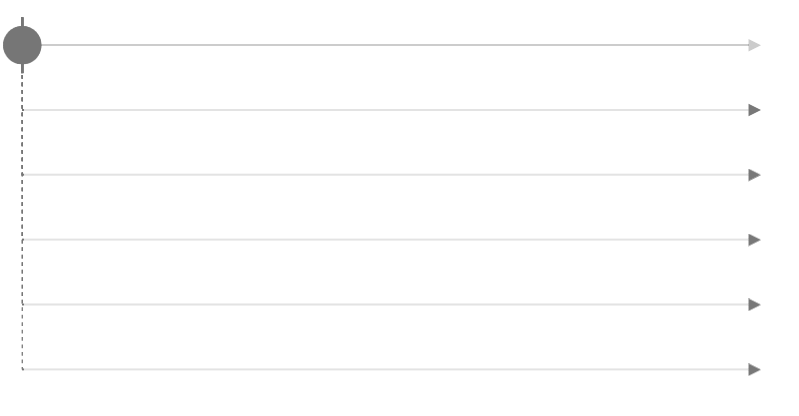Functional Reactive Programming
5 min read
Introduction
This page will support the workshop solutions with a worked example of how we can use the observables, filled with pretty animations.
Animation Generation
Consider the definitions for ranks, suits and cards, as per the workshop:
const ranks = ['A', '2', '3', '4', '5', '6', '7', '8', '9', '10', 'J', 'Q', 'K'] as const;
const suits = ['♠','♣','♦','♥'] as const;
// use typeof to define string literal types
type Rank = typeof ranks[number];
type Suit = typeof suits[number];
type Card = Readonly<{
readonly suit: Suit;
readonly rank: Rank;
}>;
const suits$ = from(suits)
const ranks$ = from(ranks)
Using the webtool, we can visualise each of these streams.


To create a card, for each suit, we can look through each rank, and create a string of suits and rank.
const deck = suits$.pipe(
map(suit => rank$.pipe(
map(rank => (`${suit}${rank}`)))))

However, this exists as four nested streams rather than one continuous flat stream. How do we fix this? We use mergeMap to merge the sub-streams into a single long continuous stream of cards. We now have a lovely little deck of cards :)
const deck = suits$.pipe(
mergeMap(suit => rank$.pipe(
map(rank => (`${suit}${rank}`)))))

However, this is only one deck? How can we create multiple decks. We will create a range, which will create a fixed range of numbers, and for each of those we can create a deck.
const decks = (numDecks : number) => range(0, numDecks).pipe(map(_ => deck))

But this poses a similar problem to the above issue with nested streams. So again, we use the power of mergeMap to flatten these streams in to one!
const decks = (numDecks : number) => range(0, numDecks).pipe(mergeMap(_ => deck))

All in order, oh no, let us shuffle them. Assuming we have these functions, which can insert an element in to a random position in an array. We will use the reduce, and the randomInsertion to shuffle them.
function impureRandomNumberGenerator(n:number) {
return Math.floor(Math.random() * (n+1)); // impure!!
}
function randomInsert<T>(a:readonly T[],e:T): readonly T[] {
return (i=>[...a.slice(0,i),e,...a.slice(i)])
(impureRandomNumberGenerator(a.length + 1))
}
const shoe = (numDecks : number) => range(0, numDecks).pipe(
mergeMap(_ => deck),
reduce(randomInsert, [])
)
This should be correct? Not quite, we reduce to a single value, an array. So, now our stream contains a single element, an array, Rather, then being a stream of elements. This array will be all of our cards, shuffled. You can see that as we hover over the element and it attempts to print the contents.

We need to turn this back into a stream. How can we do that, with the power of mergeMap! This will take our list and convert it to a stream, and then flatten it, such that our final result is a long stream of shuffled cards.
const shuffledShoe = (numDecks : number) => range(0, numDecks).pipe(
mergeMap(_ => deck),
reduce(randomInsert, []),
mergeMap(from)
)
Wow, now we have a beautiful, shiny, shuffled shoe of cards in an Observable!
